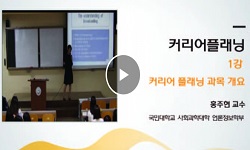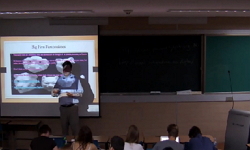코로나19 팬데믹 이후 우울증 환자가 급격히 증가하고 있지만, 실제 의사의 진료를 받는 환자의 수는 증가한 환자의 1/10 수준으로 매우 낮은 실정이다. 이와 같이 우울증 진료의 미충족 수요...
http://chineseinput.net/에서 pinyin(병음)방식으로 중국어를 변환할 수 있습니다.
변환된 중국어를 복사하여 사용하시면 됩니다.
- 中文 을 입력하시려면 zhongwen을 입력하시고 space를누르시면됩니다.
- 北京 을 입력하시려면 beijing을 입력하시고 space를 누르시면 됩니다.
부가정보
국문 초록 (Abstract)
선별검사로 찾아낸 우울증 환자는 DSM-5 진단 기준을 사용하여 진단하고, 환자에게 우울증이라는 통찰력을 갖게 한 후에 약물치료를 시작한다. 주요우울장애에 대한 치료제로 SSRI, SNRI, mirtazapine, vortioxetine을 1차 약물로 권고한다. 약물치료는 항우울제 단독 요법 또는 병합 요법으로 이루어진다. 급성기 약물치료 효과는 2주 후에 나타나며, 6–12주에 증상 완화가 목표이다. 지속기는 급성기 치료 후 4–9개월(총 6–12개월)에 해당하며, 완화 상태를 지속시켜서 현재 에피소드가 해결되기 전에 재발하는 것을 방지하는것이 목표이다.
항우울제를 시작한 후 2–4주 이내에 증상이 개선되지 않으면 용량을 늘리거나 최대 용량으로 증량한다. 적정 용량에서 4주 후에도 반응이 없거나 내약성이 문제가 될 때는 다른 항우울제로 교체한다. 일차적으로 다른 계열의 항우울제로 교체하는 것이 권장되며, SSRI 항우울제의 경우 다른 SSRI로 교체하기도 한다. 항우울제 단독요법으로 효과가 없거나 불안, 불면, 통증 등이 있는 경우에는 보조약물로 벤조디아제핀, 부스피론, NSAIDs, 에스트로젠, 테스토스테론 등을 추가하거나 다른 계열의 항우울제를 병합한다. 항우울제 치료 후 6개월 이상 완화 상태가 지속되어 약물치료를 종료하려고할 때, 반감기가 짧은 항우울제는 갑자기 중단하지 않도록 하고, 반감기가 긴 약물도 임상적 이유가 없는 한 몇 주에 걸쳐 용량을 천천히 줄이는 것이 권장된다.
코로나19 팬데믹 이후 우울증 환자가 급격히 증가하고 있지만, 실제 의사의 진료를 받는 환자의 수는 증가한 환자의 1/10 수준으로 매우 낮은 실정이다. 이와 같이 우울증 진료의 미충족 수요를 해결하기 위해서는 일차의료에서 우울증에 대한 진료 활성화가 반드시 필요하다. 주로 신체 증상으로 일차의료에 방문하는 환자 중에서 숨어있는 우울증 환자를 찾아내는 것이 우울증 진료의 시작이다. 이를 위해 PHQ-9, BDI, GDS, CDI, QIDS 등의 평가도구로 선별검사를 하는 것은 도움이 되며, 효율성을 높이기 위해 고위험군에서 하는 것이 권장된다. 이와 같이 검증된 평가도구를 체계적으로 사용하여 중증도 평가 및 치료 경과를 모니터링하는 측정기반 진료가 도움이 된다.
선별검사로 찾아낸 우울증 환자는 DSM-5 진단 기준을 사용하여 진단하고, 환자에게 우울증이라는 통찰력을 갖게 한 후에 약물치료를 시작한다. 주요우울장애에 대한 치료제로 SSRI, SNRI, mirtazapine, vortioxetine을 1차 약물로 권고한다. 약물치료는 항우울제 단독 요법 또는 병합 요법으로 이루어진다. 급성기 약물치료 효과는 2주 후에 나타나며, 6–12주에 증상 완화가 목표이다. 지속기는 급성기 치료 후 4–9개월(총 6–12개월)에 해당하며, 완화 상태를 지속시켜서 현재 에피소드가 해결되기 전에 재발하는 것을 방지하는것이 목표이다.
항우울제를 시작한 후 2–4주 이내에 증상이 개선되지 않으면 용량을 늘리거나 최대 용량으로 증량한다. 적정 용량에서 4주 후에도 반응이 없거나 내약성이 문제가 될 때는 다른 항우울제로 교체한다. 일차적으로 다른 계열의 항우울제로 교체하는 것이 권장되며, SSRI 항우울제의 경우 다른 SSRI로 교체하기도 한다. 항우울제 단독요법으로 효과가 없거나 불안, 불면, 통증 등이 있는 경우에는 보조약물로 벤조디아제핀, 부스피론, NSAIDs, 에스트로젠, 테스토스테론 등을 추가하거나 다른 계열의 항우울제를 병합한다. 항우울제 치료 후 6개월 이상 완화 상태가 지속되어 약물치료를 종료하려고할 때, 반감기가 짧은 항우울제는 갑자기 중단하지 않도록 하고, 반감기가 긴 약물도 임상적 이유가 없는 한 몇 주에 걸쳐 용량을 천천히 줄이는 것이 권장된다.
다국어 초록 (Multilingual Abstract)
The treatment for depression in primary care begins with detecting patients with depression among patients who complain physical symptoms. It is recommended to use screening tests in high-risk groups in order to increase efficiency. Measurement-based ...
The treatment for depression in primary care begins with detecting patients with depression among patients who complain physical symptoms. It is recommended to use screening tests in high-risk groups in order to increase efficiency. Measurement-based care is useful because it systematically uses verified assessment tools to assess severity and monitor treatment progress. Selective serotonine reuptake inhibitors (SSRIs), serotoninenorepinephrine reuptake inhibitors (SNRIs), mirtazapine, and vortioxetine are recommended as first-line drugs for treating major depressive disorder. Drug treatment consists of antidepressant monotherapy or combination therapy. The goal of acute phase pharmacotherapy is symptomatic remission in 6–12 weeks. The continuation phase corresponds to 4–9 months after acute phase, and the goal is to maintain the state of remission and prevent relapse. If symptoms do not improve within 2–4 weeks after starting antidepressants, the dose is optimized or increased. If there is no response after 4 weeks at the appropriate dose or tolerance is an issue, a different antidepressant should be prescribed. If antidepressant monotherapy is ineffective or anxiety, insomnia, pain, etc. are present, benzodiazepines, buspirone, nonsteroidal anti-inflammatory drugs (NSAIDs), estrogen, testosterone, etc. are added as augmentation, or a different class of antidepressants are combined. When remission continues for more than 6 months after antidepressant treatment and drug treatment is to be discontinued, antidepressants with a short half-life should not be discontinued abruptly.
동일학술지(권/호) 다른 논문
-
- 대한가정의학회
- 허 연
- 2024
- KCI등재
-
- 대한가정의학회
- 노용균
- 2024
- KCI등재
-
- 대한가정의학회
- 김원석
- 2024
- KCI등재
-
노인에서 필요한 건강검진: 한국 노인 건강검진의 필요성과 구성 요소
- 대한가정의학회
- 손여주
- 2024
- KCI등재





 KCI
KCI






